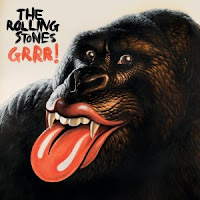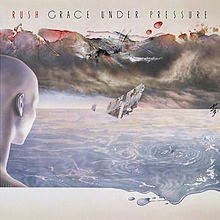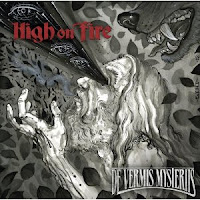Rush, Thin Lizzy, The Doors, ZZ Top find fountain of youth
By Peter Lindblad
Shaking off the rust that inevitably comes with old age, a
number of classic-rock artists showed everybody that they refuse to go gently
into that good night.
 |
| Rolling Stones - Grrr! 2012 |
Whether it was the Rolling Stones’ revving up their best
song in years with “Doom and Gloom,” or Aerosmith bringing their own brand of “Global
Warming” to the masses in live shows that were full of piss and vigor, old
greats like those icons, as well as KISS and Bruce Springsteen, burned their
AARP cards and did the kind of great work – be it in the studio, as with
Springsteen’s Wrecking Ball or Heart’s
Fanatic, or on the road – expected of
them 20 or 30 years ago.
There were incredible songs, such as Springsteen’s “We Take
Care of Our Own” or Joe Walsh’s “Analog Man,” and albums like KISS’s Monster that had unexpected vitality and
inspired performances. And tours like the Loverboy/Journey/Pat Benatar triple
bill served notice that many of these bands are still capable of delivering the
goods onstage. Truly, though, one band rose above them all in 2012, putting out
one of the best records of their career and finally getting their just due from
critics, while other releases simply outshined the competition. Here’s the best
classic rock had to offer in 2012.
Artist of the Year:
Rush
 |
| Rush - Clockwork Angels 2012 |
Voters for the Rock And Roll Hall of Fame finally saw the
light in 2012. After shunning Rush for so long, they did the right thing for
once and selected the Canadian progressive-rock power trio for membership,
perhaps earning them some small measure of goodwill from their harshest
detractors – although they stand to be inundated with slings and arrows for
denying Deep Purple again, and deservedly so. What exactly was it that tipped
the scales for Rush this time around? Could it be the fact that they produced
one of the year’s best albums in Clockwork
Angels? Undoubtedly, that had something to do with it, especially when
critics that had been unkind – to put it charitably – toward Rush in the past
gave in and applauded a record of sublime beauty, complex musicianship and
soaring ambition. A sci-fi concept album with a compelling anti-authoritarian
narrative, steam-punk imagery and coming-of-age drama, Clockwork Angels is a tour de force of heavy, intricately
constructed guitars (see “Headlong Flight” and “BU2B” for proof), crafty
melodies, shifting moods and textures, and epic arrangements – in other words,
a Rush album. Sometimes the Rock Hall voters need to be hit over the head a
number of times before they finally get it, and it seems that Rush knocked some
sense into them in 2012.
Album of the Year: ZZ
Top – La Futura (Universal Republic)
 |
| ZZ Top - La Futura 2012 |
La Futura, as it
turns out, is deeply rooted in ZZ Top’s past, and that makes it a welcome sight
in 2012. A spicy, simmering pot full to the brim of Texas blues-fired boogie,
with some of the tastiest licks Billy Gibbons has cooked up in quite a while –
this being ZZ Top’s first album in nine years – La Futura is nasty and mean from jump-street, with tracks like
“Chartreuse,” “Big Shiny Nine” and “I Don’t Wanna Lose, You” recalling the
wicked, dusty Panhandle grooves of dirty classics like “La Grange,” “Tush” and
“Cheap Sunglasses.” Like a strutting striptease, the tantalizing “Consumption”
is trashy, honky-tonkin’ fun, while the soulful “Over You” is a surprisingly
tender and heartfelt love song that comes straight out of the Stax Records
playbook. And even though a lot of La
Futura harkens back to 1973, it has a modern production sheen to it that
doesn’t tame these lions, and the first single, “I Gotsta Get Paid,” has more swagger
and tight, stop-start hooks than the Black Keys could ever hope to obtain.
Song of the Year: Rush
– “The Wreckers” (off of the album Clockwork
Angels on Roadrunner Records)
No one has ever accused Rush of sounding like R.E.M. or The
Byrds or Matthew Sweet, and there’s good reason for that. Jangly power-pop has
never been Rush’s cup of tea – that is, until now. There’s a bright, sunny
quality to the guitars in the intro and the verses to “The Wreckers” that
couldn’t possibly sound less like Rush, and yet there it is. And it reaches out
its hand to invite you in, a warm smile on Geddy Lee’s face and Alex Lifeson’s
colorful guitar licks beckoning with a shiny, happy sound that may or may not
hide a dark truth. Be careful of these men, for they are not what they seem. Ultimately,
they want to warn you that what is sometimes sold as the truth can often be a
lie, as Lee sings in the transcendent choruses, “All I know is that sometimes
you have to be wary of a miracle too good to be true.” “The Wreckers,” on the
other hand, is not. At the very least it is angelic. Awash in swerving,
swooping strings and cinematic keyboards, those magical, glorious choruses
where a world-weary Lee dispenses that sage advice are some of the most
emotionally powerful and soul-stirring moments Rush has ever brought to bear on
record. And there is a bridge in “The Wreckers” that is dangerous to cross, for
it traverses a deep, wide canyon of synthesizers, crashing drums and doom-laden
guitars that is simply magnificent to behold. Do not be wary of “The Wreckers.”
It might not be a miracle, but it’s pretty damn close.
Best Concert DVD: The
Doors at the Bowl ‘68 (Eagle Vision)
 |
| The Doors - Live at The Bowl '68 2012 |
For its historic value alone, “The Doors at the Bowl ‘68” is
heads and shoulders above any concert DVD released this year. Restored in
painstaking fashion from the original camera negatives, the band’s entire
performance from that night is included here, and it features the band in high
spirits. Loose and improvisational when the occasion calls for it, the
threesome of John Densmore, Ray Manzarek and Robby Krieger could go on endless
journeys into the jungles of the musical subconscious, but they could be tight
and sinewy. Playing at the famed Hollywood Bowl for the first time – in the
area they called home, no less – The Doors set the night on fire, and a
particularly impish and focused Jim Morrison howled and sang with a primal
energy that only he could summon. An abundance of incisive and fascinating
bonus features put the event into perspective and the inclusion of performances
of “Hello, I Love You,” “The WASP (Texas Radio and the Big Beat)” and “Spanish
Caravan” that had previously been lost to time have found their way back. And
it’s good to have them again.
Best Documentary DVD:
Freddie Mercury – The Great Pretender (Eagle Vision)
Onstage, Freddie Mercury was indestructible, a force of
nature whose flamboyant showmanship knew no bounds and whose voice rang out as
clear as a bell in loud stadiums full of adoring fans who hung on his every
word – that is, when they weren’t singing along with him. That was the Freddie
the world knew. But, in his personal life, Mercury was less sure of himself, a
man who sometimes made mistakes and was a slave to his appetites. “Freddie
Mercury – The Great Pretender” explores every facet of the singer’s
extraordinary life, from his globe-trotting childhood through his wildly
successful, if sometimes contentious, studio work with Queen and on to his
fascination with opera and the ups and downs of his inconsistent solo work.
Loaded with archival images and video footage – including sensational live
material – “Freddie Mercury – The Great Pretender” also packs in revealing,
insightful commentary and fascinating anecdotes from Brian May, Roger Taylor
and a host of other Queen confidantes. It’s a loving portrait of an artist who
died too young, and yet, it’s a completely honest rendering that pulls no
punches. Mercury probably wouldn’t have it any other way.
Best Live Album: Thin
Lizzy – Live in London 2011 (Four Worlds USA)
 |
| Thin Lizzy - Live in London 2011 |
Phil Lynott isn’t going to come walking through that door …
ever again. He’s gone, but the amazing rock ‘n’ roll he left behind deserves to
be heard in a live setting, doesn’t it? And who better to play it than Thin
Lizzy survivors Scott Gorham and Brian Downey. A fitting tribute to their
fallen friend, this concert LP is 19 tracks of explosive hard-rock, containing
all the Thin Lizzy hits and then some in a fantastic set list. The mix is
primed for optimum power, and this collection of musicians performs classics
like “Jailbreak,” “Cowboy Song” and “The Boys are Back in Town” with grit,
enthusiasm and swashbuckling panache, those well-executed, signature
twin-guitar leads tangled up so exquisitely like ballroom dancers twirling
around on the edge of a switchblade. There’s a lot of ground to cover with Thin
Lizzy, and this particular incarnation does its best to thumb through the
catalog and pick out only the choicest cuts. It’s a flawed record, to be sure,
but there’s no doubting the joy and electricity with which Lizzy performs these
classics. Word has it that some of the boys from this version of Lizzy are
starting a new band called Black Star Riders. Based on this release, which in
my eyes becomes more thrilling with repeated listens, expectations should be
exceedingly high for them.
Best Reissue: Blue
Oyster Cult – The Columbia Albums Collection (Legacy Recordings
 |
| Blue Oyster Cult - The Columbia Albums Collection 2012 |
The word “exhaustive” doesn’t even begin to describe this
archeological dig. For starters, this set, released in celebration of Blue
Oyster Cult’s 40th anniversary, gathers together every last one of
their studio albums released between 1972 and 1988, from their self-titled
debut LP on through to Imaginos. That
means it includes classic albums such as Agents
of Fortune, Spectres, Fire of Unknown Origin, and Cultosaurus Erectus, among others. Oh,
and did I mention the live albums? On Your
Feet or on Your Knees, Some Enchanted
Evening and Extraterrestrial Live
are remastered for greater sonic impact and expansiveness. Packed to the gills
with great photos and fascinating liner notes, there is a 40-page booklet that
accompanies the collection, which is packaged so snugly and efficiently that it
won’t throw your cataloging system – if you have one – completely out of whack.
You want rarities? There’s a disc for that, too, plus another that gathers as
many of their radio broadcasts as they can find and downloads and a bushel full
of bonus tracks. Where other classic-rock artists, or rather their record
labels, seem to take pleasure in releasing their past works in dribs and drabs,
offering very little in the way of rare stuff, Blue Oyster Cult has done it in
one fell swoop and they have given the people what they wanted.
Best Book: Gregg
Allman – My Cross to Bear (William Morrow)
 |
| Gregg Allman - My Cross to Bear 2012 |
Written in
collaboration with esteemed music journalist Alan Light, “My Cross to Bear”
finds Gregg Allman in a reflective, confessional mood. Ambling easily through
the past, Allman takes his time getting to the real meat of the story, but when
he does, the tales he tells are sometimes unsettling, occasionally funny, and
often heartbreaking. Life, love, drugs and music – that’s what Allman’s book is
about, and it’s a portrayal that isn’t a flattering one. Looking into the
mirror, Allman sees his flaws in sharp relief and is willing to expose them for
all to read. Once you get past all the self-excoriating personal revelations,
there is plenty of behind-the-scenes information on the Allman Brothers to
excite fans of their music.
%2Bcopy.jpg)























